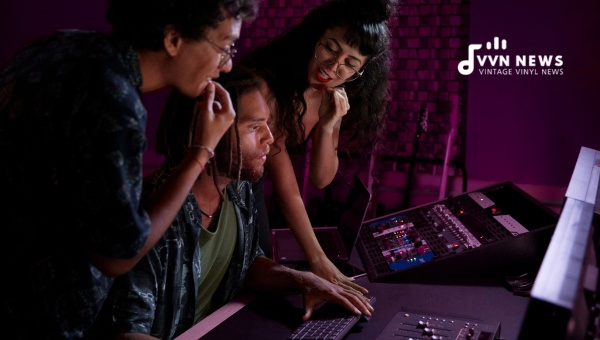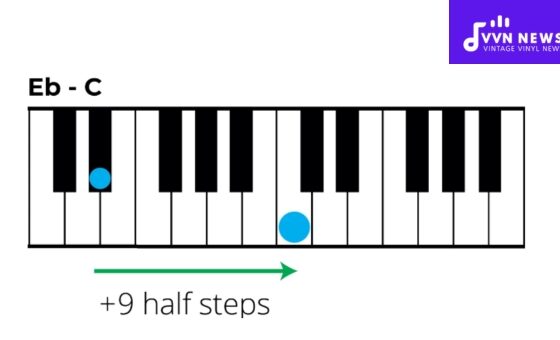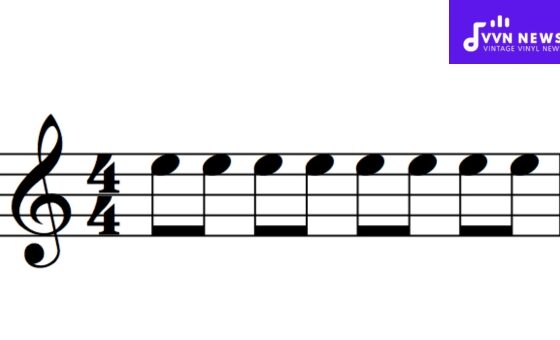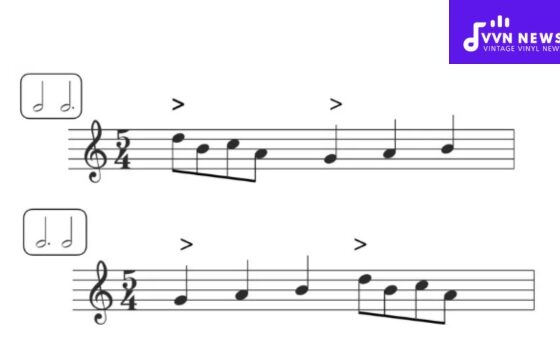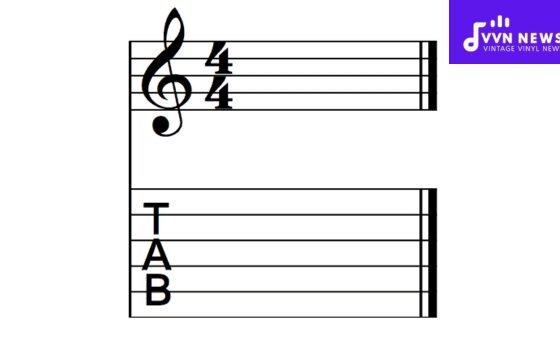True magic happens when our passion and profession align. I found my sweet spot in the world of music; a vibrant universe ever-beating with rhythm and melodies.
I gathered numerous moments of euphoria, working aimlessly behind the soundboard, converting fragmented ideas into holistic tunes.
You, too, can channel your love for this art into creating symphonies from scratch. Here is how to start producing music as a beginner.
Stepping into the realm of music production might seem daunting at first glance. This seemingly intricate labyrinth can encase anyone into its world of endless beats and evolving harmonies.
It is this richness of rhythm that makes your journey to becoming a musician incredibly engrossing and fulfilling.
Trust me when I say that each learning curve you encounter undoubtedly holds beautiful surprises for you along the way.
Now let’s dive fearlessly into the rhythms waiting, eager to decipher how to rule them ourselves.
The Basics of Music Production
Before setting foot on this fascinating journey, it’s key that we comprehend certain foundational concepts.
This rudimentary knowledge will assure you a smoother ride on your path to becoming a successful music producer.
What is Music Production?
Music production is quite like preparing a sumptuous meal. Have you ever noticed the medley of ingredients and culinary acumen required to concoct a dish that rings bells in our taste buds?
A similar recipe runs behind the scenes in music as well. The process involves creating, arranging, recording, mixing, and fine-tuning sounds to form an enchanting piece of melody.
From patchworking multiple instruments, sounds, harmonies, and verses into one composition to refining its final output for acquaintance with the audience – it all falls under the umbrella of Music Production.
Essential Equipment for Beginners
Your arsenal in this journey would comprise certain crucial tools. A powerful computer forms the core of your setup followed by good-quality headphones, studio monitors for precise listening, and an apt audio interface connecting your equipment with the computer.
A microphone also adds up if you plan to record vocals or live instruments. These are coupled with software known as a Digital Audio Workstation (DAW).
Choosing the Right Digital Audio Workstation (DAW)
A DAW could be understood as a canvas catering to your artistic inclinations by providing all the necessary tools and techniques in one place. It enables the recording, editing, and mixing of music tracks digitally.
Some accessible DAWs for beginners include Garageband (free on iMac), Ableton Live, and FL Studio.
Investing time in selecting appropriate DAWs pays off well since familiarising yourself with navigating this software is fundamental.
Getting Familiar with MIDI Controllers and Instruments
Intriguingly enough MIDI translates as Musical Instrument Digital Interface! It’s essentially a protocol enabling musical devices to communicate with each other.
As a beginner, owning a simple MIDI keyboard would suffice covering significant ground.
The purpose is to start gradually without overwhelming yourself. Alongside increasing familiarity with your tools, learning about music theory and cultivating an ear for patterns and rhythms would bolster your foundation.
Also Read: How To Structure The First Flute Lesson? [Expert Advice]
Setting Up Your Home Studio
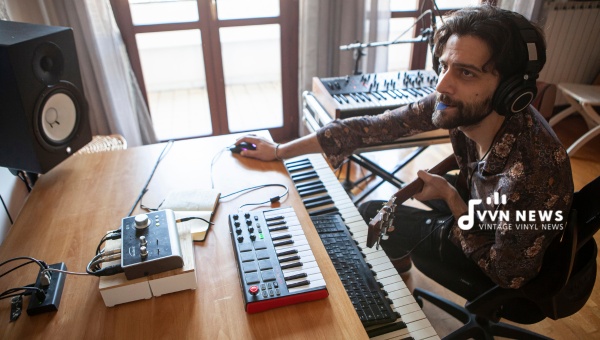
Every visionary needs a sanctuary, a space to let their ideas flourish. Similarly, as a budding music producer, your home studio plays an indispensable role in transforming your raw musical thoughts into concrete reality.
Creating a Productive and Inspiring Workspace
Initially, find a quiet and dedicated space to set up your studio. Aim for minimal distractions to keep you focused on the ball. Remember, simplicity is the key.
Optimally utilize the available space incorporating essentials such as a computer, headphones, MIDI controllers and microphone thereby crafting an efficient workspace.
No point in having a bunch of fancy gear if you’re not comfortable while using them.
Consider investing in an ergonomic chair which supports your posture during those long hours of immersion in musical creation.
Acoustic Treatment for Optimal Sound Quality
This might sound highbrow but acoustic treatment simply implies enhancing sonic environment of your studio. It ensures the sound produced inside this confined space doesn’t echo or distort but expresses itself authentically. Incorporating something as basic as foam panels can significantly reduce echoes ensuring improved sound quality.
Importance of Headphones and Monitors
Headphones unveil minute details precisely which aids during editing or finessing tracks. Concurrently employing monitors give you an accurate representation of how your mix would perform on various audio systems.
Investing in good headphones and monitors only elevates overall sound experience bringing you one step closer to perfection with every note played!
Organizing Cables and Gear
Imagine wasting significant amount of creative time untangling cables instead! A little organization certainly helps to maintain workspace sanity.
First step is cable management. Routing cables under desks or behind computer monitors can lead to a cleaner workspace giving it professional vibe besides keeping them undamaged for longer.
Designating storage areas keeps every tool easy-to-find be it spare instrument strings or different types of cables ( USB, Ethernet). Buying some basic gear like cable ties, a wire rack or drawers would help in maintaining the order.
A well-configured home studio doesn’t need to be extravagant but sensible, curated considering your unique needs and hence aiding in smoother navigation through your wonderful music journey. First set the stage right for creativity to glide effortlessly over it.
Also Read: How To Upgrade Your Flute? [A Comprehensive Buying Guide]
Learning the Fundamentals of Music Theory
Music theory, in essence, is the language of music. Linguists would understand the value of syntax and semantics while using a language. Similarly, structure and coherence form an integral part when we attempt to create a piece of music.
Hence comprehending basics of music through its fundamental theory proves extremely beneficial and catalyzes your voyage towards becoming a proficient music producer.
Exploring Musical Scales and Chords
To illustrate simply, imagine seeing a rainbow. The ease with which we differentiate between its seven colors is remarkably similar to identifying distinct notes within a scale in music theory.
A scale is primarily an arrangement of notes in an ascending or descending pattern.
There are numerous scales. However, as beginners, understanding Major scales (happy sounding) and Minor scales (sad or dramatic sounding) provides a substantial groundwork.
Chords are just multiple notes played together creating harmony. They have categorical moods associated with them for instance, Major chords could sound happy whereas Minor chords could sound sad.
Rhythm and Timing
Rhythm forms the backbone of any musical piece sewing together individual sounds into compelling beats and patterns — the pulse or heartbeat if you will.
Grasping time signatures within which rhythm flows is quite like reading a clock except in place of hours, minutes, seconds we get whole notes, half notes, eighth notes etc each indicating how long a note should be held.
Timing here refers to maintaining correct time throughout your performance ensuring smooth flow without sudden delays or rushes.
Basic Notation for Composition
Notations form the written counterpart for vast musical expressions just like any language has alphabets.
It covers symbols representing pitched (notes) or non-pitched sounds (percussion), how long they are sustained, or even the silence between them!
Hence by understanding The Musical Alphabet, Types Of Notes And Rests, Key Signatures, and Time Signatures, you can read this language. It’s like learning a musical map that guides your journey in writing or reading music.
Diving into the basics of music theory, you’re essentially stepping closer to understanding the soul of music. It is just like learning grammar rules before framing elaborate sentences.
Similarly, once you master these fundamental pillars of music, it will empower you to construct more complex and profound musical stories with ease.
Also Read: How To Use Music To Help Your Mental Health? [Expert Tips]
Composition and Arrangement Techniques
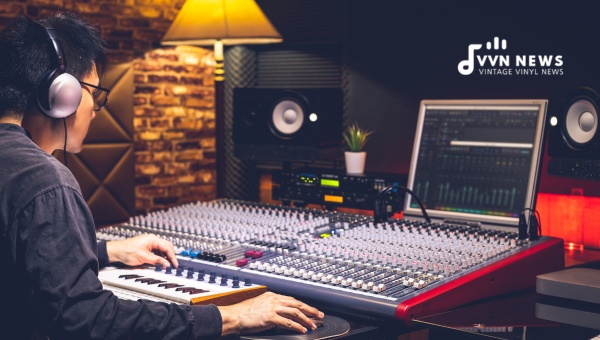
Mastering music production involves navigating the riveting world of composition and arrangement.
Once you have a basic understanding of your software – DAW and MIDI controllers – it’s time to play around with sounds, assets that will form the core material for your compositions.
Developing Melodies and Harmonies
Melodies are like the heart of any track – they tell the main story. Structured often as repetitive patterns, these sets of notes stitched together create a vibe or invoke specific emotions in listeners.
Harmonies, on the other hand, work as supporting narrative filling-out melody’s backdrop.
These are multiple notes played together, producing a harmonic or pleasing sound vulnerable to evoke intense emotional responses.
Many budding producers use music theory knowledge about scales and chords while structuring melodies or harmonies. Don’t get overwhelmed! Just start with simpler elements—few piano notes forming a catchy riff, maybe—and gradually add complexity as you learn.
Structuring Your Song: Intro, Verse, Chorus, Bridge, Outro
Understanding song structure benefits by providing an overall framework to weave your musical stories. The most common parts include:
- Intro
- Verse
- Chorus
- Bridge
- Outro
Each part serves its distinct purpose; ‘Intro’ setting the song’s tone followed by ‘Verses’, narrating your story while ‘Chorus’, provides catchy repetitive themes proving memorable hooks for listeners! The ‘Bridge’, falls usually past second chorus introducing a contrast or surprise element before charging back into climax i.e., return of chorus or refrain! An ‘Outro’ then satisfyingly concludes piece fading into silence.
Layering Instruments for Depth
Layering enhances depth in your track making it sound fuller & dynamic! It involves stacking multiple instruments/sounds onto one another typically playing same/different parts reinforcing tonal quality or creating new textures. Be careful though not to overdo, as it might lead to a chaotic mix.
Adding Drum Patterns and Percussion
Rhythm forms the backbone of any track; shaping the energy or groove of your composition, syncopating listeners’ heartbeats to your tune! Adding drum patterns and percussion gives life to your song, as each drumbeat or percussive element aids in propelling melody and rhythm forward.
As you embark on this journey from composition towards arrangement, always remember that practice makes perfect. Create, innovate and experiment boldly with sound. Let’s embrace the process with an open mind as there are no set rules – just guidelines opening doorways to unbounded creativity.
Also Read: How To Teach Breath Control? [Easy Exercises For Singers]
Recording and Editing Your Music
Once you venture beyond the basics and put together a well-composed tune, the next step is to lay down your sounds. It’s more than merely hitting the ‘Record’ button, it encompasses microphone techniques, multi-tracking, and eventually refining it all – a phase that often gets overlooked by beginners.
Microphone Techniques for Vocals and Instruments
Understanding different microphone techniques can transform how your recordings sound. Highlighting different facets of a performance or smoothing out overly harsh tones are all within our grasp if we explore the nuances of positioning microphones.
Close-miking is when we position the microphone close to the sound source. This is perfect for vocals or solo instruments as it captures every subtle nuance of the performance. However, one needs to be careful about not causing proximity effect, which amplifies bass frequencies when too close.
Ambient miking, on the other hand, places microphones further away from the source capturing natural room reverb and a broader tonality. This technique works well with acoustic instruments or choirs where capturing depth and space is desirable.
Overdubbing and Multitrack Recording
When it comes to recording multiple elements simultaneously or layering music on top of previously recorded tracks, you delve into the realm of overdubbing and multitrack recording_.
In essence, overdubbing refers to recording a new part over existing tracks without affecting them. This technique allows for adding layers like backup vocals or intricate guitar parts in subsequent takes after laying down primary tracks such as drum lines or rhythm guitars.
Multitrack recording, meanwhile, allows capturing various instrumental/vocal parts separately but concurrently in different tracks of your DAW. It provides flexibility while mixing, as you can tweak levels of individual instruments attributable to their isolated placement onto separate tracks.
Editing Tracks on Your DAW: Cutting, Copying, Pasting
Editing your recorded tracks might seem like a daunting challenge initially, but turning the ‘chaos’ into ‘coherence’ is what differentiates a good music producer from an average one.
Your chosen DAW will usually come equipped with an array of tools geared towards polishing your creation.
Basic operations involve cutting unwanted segments off recordings (say that awkwardly prolonged silence after your guitar solo), copying recurring sections (like repeating choruses) instead of performing them over and again, and pasting, where you glue together disjoint fragments forming a beautiful melody.
Honing this skill set is just as important as knowing how to compose music. After all, shadows are as integral to art as colors. Take time to acquaint yourself with these processes and methodologies intimately – It’s well-worth it.
Practice will yield speed and precision that will gradually render this phase refreshingly effortless.
Also Read: How To Clean Your Flute [Keep Your Instrument Shiny & Sounding Great]
Mixing Your Tracks Like a Pro
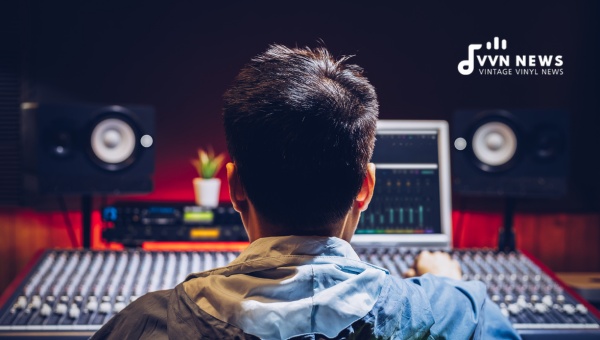
Creating your masterpiece involves more than just recording your track, it requires an essential step that combines all the sound elements together to create a well-balanced, musically coherent piece. This, my friend, is called mixing.
Balancing Volume Levels and Panning
This process begins by levelling all the tracks; adjusting the volumes so nothing overshadows another sound in your mix. Every instrument should be heard distinctly and should contribute constructively to the whole composition.
To further craft the stereo field of your music and give each sound its own space in the sonic landscape, panning is used. By moving certain sounds to left or right channels in varying degrees, you create a sense of width and space in your mix. It’s like placing musicians on a virtual stage to create a detailed soundscape.
Applying EQ to Shape Sound Frequencies
Next comes EQ (Equalization); it equips you with the ability to boost or cut specific frequencies in each track’s sound spectrum. In simple words, EQ works like charm: brightening up dull vocals, providing clarity to muddy guitars or shaping bass tones for crispness and punch.
There are various types of EQ such as parametric EQ (pinpoints specific frequency bands), graphic EQ (offers sliders for different frequency bands), shelf EQ (affects all frequencies beyond a certain point) among others.
Using Compression to Control Dynamics
Compression, our next hero acts subtly but definitely leaves an impression on listeners’ minds. It helps handle peaks that might cause discomfort and also brings up low-level details that could get missed otherwise. Hence, it provides consistency of volume across tracks making compositions sonically balanced and controlled.
The gist lies in moderation by choosing appropriate threshold and ratio levels; higher levels might kill dynamics while lower ones might make compression redundant.
Spicing it up with Reverb, Delay, and Other Effects
The final touch added to your mix goes a long way in defining the mood or character of your music. Use Reverb for simulating acoustics of different spaces; may it be grandeur of a cathedral or intimacy of a bedroom studio.
Delay, on the other hand can produce echo-like effects ranging from subtle ‘doubling’ effect on vocals to wild bouncing echoes enhancing creativity.
You could also dabble with exciting assorted effects like Chorus (creating illusion of multiple sounds from one), Flanger (offers ‘jet-like’ sweeping sound) , Phaser (provides sweeping, whooshing sound effect).
Like an artist playing with various colours, mixing lets you tailor the sound spectrum, moulding it into a piece resonating with your creative vision. It may be time-consuming at first but it unpacks in layers; as you venture deeper into this world, it crafts you into an artist who doesn’t only create music but paints the canvas of melodies.
Also Read: 13 Best Power Conditioners For Superior Protection [Buying Guide]
Mastering Your Finished Tracks
After all set layers and beats are harmonized into a mellifluous composition, the process of mastering throws in the final polish. It levels up your mix for a professional sound output, ready to amuse listeners on any device or platform.
Finalizing Sound Quality with Mastering Techniques
Mastering involves subtle but critical enhancements in EQs (equalizers), dynamic range compression, saturation or stereo enhancement to bring out the richness of your music. High-quality plug-ins for mastering are available on most DAWs which can be utilized to optimize the quality. However, never underestimate the power of trained ears.
It’s pivotal during this stage to ensure that each element of your track gets its due space and can be clearly distinguished – from mesmerizing vocal lines cruising smoothly over catchy drum beats, to hidden subtleties enhancing overall tonality! Yes, it may seem tricky but with consistent practice, you will eventually grasp its finesse.
Balancing Loudness Levels across Different Platforms
Inconsistency in loudness between different tracks or across multiple devices can happen – and it’s annoying. Here lies the purpose of normalization during mastering.
Normalization adjusts your track’s volume to fit into standards set by different platforms like Spotify, Apple Music, or radio stations. LUFS (Loudness Units relative to Full Scale) is the unit providing you an objective measurement for loudness normalization.
A quiet track may get lost among loud ones, while excessively loud mix might result in loss of dynamics leading to distortion. Hence balancing loudness is utmost crucial for an enjoyable listener experience irrespective of platforms they use.
Bask in every challenge that mastering throws at you; it’s like performing finishing touches on your masterpiece artwork after all!
Promoting Your Music Online
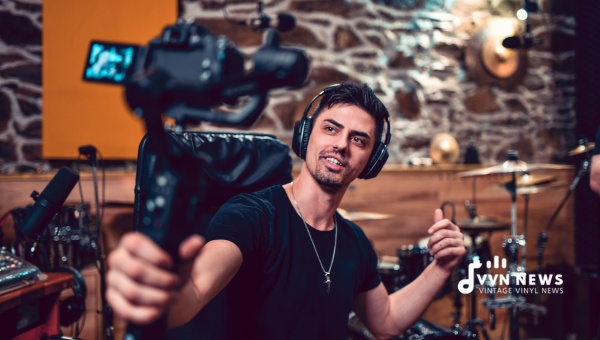
In today’s digitally forward world, the internet serves as a wide-ranging platform to share and showcase your talent. It possesses the potential to transform any idiosyncratic artist into an overnight success. So, making good of this opportunity certainly stands you in good stead.
Creating a Professional Brand Image as an Artist/Producer
Branding is much akin to putting your best foot forward. Crafting a compelling brand image is vital since it is your first interaction with potential listeners. Your brand image should be a mirror reflecting your unique musical style and personality.
Start by creating a logo or image that resonates with your musical persona. Consider factors like color schemes, fonts, graphic design styles, and even overall aesthetics when designing your look. A consistent branding across all social platforms is key for recognition and recall.
Creating engaging content that narrates ‘your’ story helps build an emotional connect with the audience. Remember not to restrict this to just music; bring these elements into everything related to you as an artist – from your album art to your website design!
Uploading Tracks on Streaming Platforms like Spotify & Soundcloud
Next step in promoting is sharing the actual music! Popular platforms such as Spotify and SoundCloud are fantastic avenues for emerging artists and producers.
Setting up artist profiles on these platforms puts you in direct reach of billions globally who use these services daily. These portals also offer various promotional tools such as playlists, radio stations, and algorithms that help draw attention towards new music.
Make sure your track information is accurate during uploads since these details often increase searchability of songs on these platforms revving up potential fans’ discovery process.
In this digitally thriving world where opportunity lies at every corner, the more eyes and ears you get onto your music, the faster you’re likely to hit your rhythm running.
The ancient saying holds true here – if a tree falls in the forest and no one is there to hear it, did it really make a sound? Your musical symphony truly comes alive when heard and appreciated by those around. So don’t shy away from promoting your work with pride.
Also Read: Achieving Musical Proficiency Through Online Lessons [Pro Tips]
Building Your Online Presence
An imperative aspect of starting your journey is developing an online reputation or personal brand. This not only helps in establishing your identity as a music producer but also takes your music to myriads of potential listeners worldwide. Remember, your music is much like a tree falling in the forest – it’s presence is validated only when there’s someone to hear it out!
Creating a Website or Portfolio to Showcase Your Work
Investing time into creating a professional website from the get-go truly reaps benefits in the long run. Consider this space as your musical abode where anyone can drop by for familiarising themselves with you and your work.
Your website should be user-friendly and visually appealing, with easy navigation towards essential sections. A ‘Music’ section for show-casing your compositions, and an ‘About Me’ space for detailing your musical journey are fair starts. Also consider maintaining an updated ‘Contact’ section for business enquiries.
Platforms such as Wix and Squarespace allow for easy website building.
Utilizing Social Media Platforms to Connect with Fans
Being actively present on social media channels puts you on a first-name basis with your fans. Regular posting of behind-the-scenes content, sneak peeks into new projects or casual anecdotes builds up a sincere connection.
Utilize platforms such as Instagram, Twitter, Facebook according to their strengths. For instance; use Soundcloud or Youtube for premiering new tracks while Instagram works best for story-telling visuals and live interactions.
Remember to always stay true to yourself and keep interactions genuine – this resonates much better with followers.
Engaging with Online Music Communities and Forums
Participating in online forums Reddit’s music production thread, or specific DAW communities online can provide invaluable feedback for your work. These platforms harbor potential collaborations, valuable discussions about gear, plugins, techniques and much more.
Benevolent interaction on these forums notches up your visibility within the community, further affirming your online presence.
Remember to build and sustain your online presence with a balanced blend of showcasing your work and genuine personal interactions. Elevating a music producing beginner to a household name is potentiated by the right use of the digital space!
Also Read: 12 Tips To Improve Your Low Notes On The Flute [Easy Strategies To Learn]
Collaborating with Other Musicians
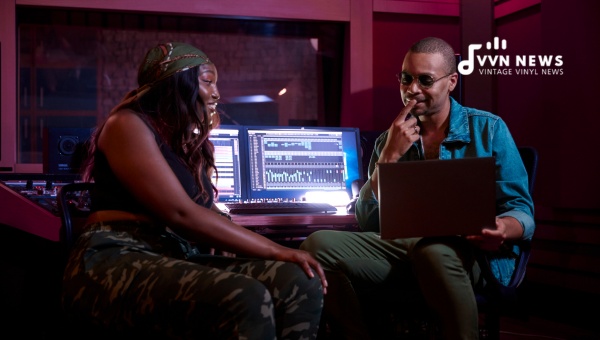
As insular as we may perceive the art of making music, collaborations can often set the spark required to birth unforgettable symphonies. They catalyze our growth as budding artists and provide platforms to set foot in unknown territories, expanding our musical repertoire. Enhancing clarity of roles while harmonizing different skills, collaboration cultivates a rhythm that sounds both novel and intriguing.
Finding and Connecting with Like-Minded Artists
In this digital age characterized by social media and various online platforms, finding artists who speak your ‘music language’ has become increasingly feasible. Platforms like SoundCloud, BandCamp, Reddit and even more inclusive playgrounds such as Vampr or Kompoz are treasure troves for finding potential collaborators.
However, one should remember that collaboration isn’t just about scouting talent. It’s about connecting on an artistic level. Initiating conversations about shared music tastes or production techniques can lead to invaluable partnerships.
Collaborative Songwriting and Production
Investing in a joint venture with another artist means leveraging each other’s strengths while addressing gaps jointly. Welcome divergent views since they help churn out fresh perspectives adding newer dimensions to your music. For instance, an accomplished guitarist might partner with a whiz beat-maker; the resultant harmony could be simply electrifying!
Numerous digital tools like BandLab, Ohm Studio, etc., assist real-time co-creation irrespective of geographies.
Networking to Expand Your Music Opportunities
The power of networking cannot be overstated in the music industry. Attend music festivals, gigs, open mics, or workshops whenever possible. Such congregations offer fertile grounds for meeting co-artists, getting known in local circles and even landing worthy gigs!
Remember that networking is a two-way street – both offering hel
and seeking it regularly work best to create lasting relationships. Engage actively with the wider music community, both online and offline, share your work, support others and grab opportunities betiding your way.
Seeking Feedback and Improving Your Skills
Let’s be honest, the path to amelioration is often paved with constructive criticism. From Mozart to Beethoven, from Lennon to McCartney, every great musician has not only sought but thrived on feedback. In our journey of music production, this pivotal concept holds no less value.
Sharing Your Work for Constructive Criticism
Musicians are artists and often our latest composition feels like a masterpiece. However, it’s beneficial to develop a thicker skin while gradually stepping into professional platforms. It is crucial that you share your songs with those in your community—family, friends or co-musicians—and swallow that lump which forms in your throat at the thought of negative comments.
Feedback can come in two forms – praise or constructive criticism. If it’s praise, it boosts your morale! If it’s constructive criticism – even better as it gives you clear pointers where improvement can be incorporated. Let me assure you, every critique sharpens your craft.
Ways of seeking feedback can be varied – playing your tune in family gatherings or jam sessions or sharing online on platforms such as SoundCloud, Reddit’s r/WeAreTheMusicMakers thread etc. Remember – don’t get disheartened by any negative opinions; instead use them as stepping stones towards refining your skills.
Also Read: 10 Tips On How To Teach Music Theory? [Educator’s Guide]
Actively Seeking Mentorship or Music Production Courses
Another effective approach towards polishing your craft is actively seeking mentorship or enrolling in music production courses. I strongly recommend Berklee Online which offers affordable courses and accredited Bachelor degrees in Music Production taught by well-versed professionals from this field.
Mentors can play pivotal roles by imparting upon you their learnings from years of experience while guiding you personally through every curve of this journey.
Constantly Experimenting and Exploring New Techniques
Imagination and experimentation walk hand-in-hand in the field of art. Your unique touch distinguishes you from the crowd, so don’t be afraid to experiment and color the canvas of music production with your original ideas.
There is a plethora of YouTube tutorials on various techniques with DAWs or arranging music. Watch, learn, practice, make errors and rectify them till you evolve your own rhythm.
Each step you take in learning, each critique received and each experiment made – are all threads assembling your quilt of proficiency in producing Music! Keep refining till your symphony resonates with the world around.
Overcoming Common Challenges for Beginner Producers
The journey to becoming a music producer is filled with challenges- but don’t get bogged down! Let’s discuss some common hurdles beginners face and how we can confidently stride past them.
Dealing with Writer’s Block and Lack of Inspiration
A dry spell or creative blockade often plagues beginners, promoting self-doubt. I’ve been there myself, staring blankly into a half-baked musical piece questioning the whole endeavor. The key, however, lies not in escaping these blocks but dancing our way through them.
To counter lack of inspiration, surround yourself with diverse influences outside your comfort zone. Attend concerts, listen to different genres or pull out that old vinyl from storage.
Nature walks, meditative spaces, or even the sounds of a bustling city street could spark a melodic idea. When battling writer’s block – don’t strain your grey cells endlessly; instead, take short breaks to clean your musical palate. Once rejuvenated, return to your piece and you might just surprise yourself!
Managing Time and Staying Motivated
“Are there enough hours in a day?”, an all too familiar question for those entering music production! Practice time-management by setting specific, measurable, achievable, relevant andtime-bound goals (SMART method). Divide large projects into smaller tasks; not only does it prevent overwhelm but each completed task adds fuel to your motivation engine.
Create a dedicated schedule slotting time for creation, learning new techniques and recreational breaks alike – strive for balance! Stay motivated by tracking your progress and celebrating small wins; every beat you tweak is another step forward on this journey.
Also Read: Achieving Perfect Flute Intonation [Essential Tips & Techniques]
Overcoming Technical Difficulties
Who knew music could have technical glitches too – isn’t it all about harmonies? Turns out, as intimidating as it sounds now – dealing with technical issues forms an undetachable part of this journey. Equip yourself with basic know-how of your gear, and don’t shy away from the user manuals.
Regularly update your DAW and plugins. Basic troubleshooting like checking your cable connections, setting correct input/output sources, and ensuring drivers are up-to-date can resolve a lot of common issues.
Delve deep into online forums and tutorials to gain pro-tip troubleshooting insights. Remember- With each challenge comes the opportunity for growth. Embrace it; let these hiccups become a stepping stone in your quest to become a music maestro!
Copyright and Royalties for Music Producers
Navigating your way through your musical journey involves not only giving melody to beautiful tunes but also has a lot to do with the legalities and formalities behind it.
This world may seem filled with complex lingo and intimidating procedures.
But, let’s try to simplify it because understanding copyright laws and royalties is essential if you want to protect your work and profit from it.
Understanding the Importance of Copyright Protection
So, let’s talk about why copyright protection is so crucial for music producers. Copyright acts as a shield for original works of authorship including music compositions and sound recordings. It secures exclusive rights for creators, preserving their intellectual property against unauthorized exploitation.
In essence, having copyright protections means that you are the only person allowed to reproduce, distribute, or perform your music publicly.
If anyone else wishes to use your work, they must obtain permission from you, which usually comes with compensation in the form of licensing fees or royalties (more on that later).
Learning about Different Types of Royalties
Royalties represent the primary source of income for most musicians. We can broadly classify these into three types: mechanical royalties, performance royalties, and sync licensing fees.
Mechanical Royalties are owed whenever a song is copied onto CDs or vinyls, digital downloads or streaming services. These are set by law in most countries and collected by Mechanical Rights Organizations (MROs).
Next up are Performance Royalties which flow in when the song is performed publicly. This includes live concerts as well as broadcasting over radio or TV stations. Performance rights organizations (PROs) handle their collection.
Lastly, Sync Licensing Fees, often simply called “sync fees”, come into play when your melody gets synchronized with visual media like movies or advertisements. The payment depends upon negotiation between you and whoever wants to use your creative piece.
Also Read: 20 Best Eq Pedals For Perfect Tone [Shape Your Guitar Sound]
Registering Your Music to Collect Royalties
To effectively manage your copyright, there’s a crucial administrative step: registering your work. You should register with the copyright office of your country – in the US, this is the U.S. Copyright Office (www.copyright.gov).
In addition, sign up with one (or more) Performing Rights Organization like ASCAP, BMI in the US or PRS for Music in the UK. These will protect your performance rights and ensure you’re paid when your song gets public performance.
Now armed with this essential knowledge on copyright protection and royalties, you are one step closer in your quest to become a successful music producer. Turn those dreams into action, it’s high time you rule those rhythms!
Taking Your Music Production to the Next Level
The journey of a beginner stepping into music production doesn’t merely halt at producing initial tracks. It involves breaking barriers, setting new benchmarks, and continually evolving and growing. Attaining a certain level of proficiency demands ongoing learning, networking, and exploring new avenues. Here are some strategies to take your music production game up a notch.
Attending Workshops, Seminars, or Music Production Conferences
As they rightly say – “Knowledge is power”, and in the world of music production, it’s no different. Avenues such as workshops, seminars or conferences pack power-boosting experience into a compact duration. These platforms provide invaluable insights from well-established professionals in the industry.
One could gain an understanding of latest trends and advancements in audio technology or possibly unravel elusive production techniques through hands-on sessions! They also present an opportunity to probe questions sprouting in your mind. Websites like Eventbrite often list such events happening nearby.
Collaborating with Established Artists/Producers
No knowledge acquisition beats learning from real-world encounters! Collaborating with well-versed artists exposes you to unique styles and individual workflows apart from expanding the horizons of creativity. You can pick up intricate tips which you might not find in any manual or tutorial. Not just skills, collaborations open doors for networking with industry insiders which is incredibly beneficial in growing professionally.
Numerous online platforms offer services to connect creatives; SoundBetter being one example offering a comprehensive database of professional producers available for collaboration.
Pursuing Licensing Opportunities for TV, Film, or Advertising
Another avenue where music producers can extend their craft is by venturing into music licensing opportunities available through TV commercials or film soundtracks.
Platforms such as Songtradr or ASCAP can give your music global exposure, apart from opening new streams of revenue.
The key to commercial licensing is crafting a tune versatile enough to encompass different emotional contexts. This method offers a chance to work under client-direction and polish skills in producing within stipulated guidelines.
As reiterated, growth is primarily about exploring, venturing out of comfort zones, and pursuing every opportunity that comes along the way. Implement these strategies with diligence and watch yourself transform from being a beginner to an experienced professional in music production.
Also Read: 17 Best Delay Pedals For Heavenly Echo Tones
FAQs About music production
What role does a Digital Audio Workstation (DAW) play in music production?
A Digital Audio Workstation (DAW) is a software platform that allows you to record, edit, and mix digital audio, offering a comprehensive toolset for the production of music.
Do I need a large space to start a home studio?
Not at all. You can set up your initial home studio in any quiet space that can accommodate your essential equipment like a computer, headphones and a MIDI controller.
Do I need to know how to play an instrument to start producing music?
While knowing an instrument can be beneficial, it’s not a mandatory requirement. Digital tools and software help create music even without traditional instrumental skill.
Is it necessary to enroll in music production courses as a beginner?
No, it’s not mandatory. Many successful producers are self-taught and relied on various online resources available freely or relatively cheaply.
What’s the best DAW for beginners?
There are several user-friendly DAWs ideal for beginners such as Garageband for Mac users, FL Studio for Windows users, and Ableton Live used extensively across platforms. The best choice would depend on your preference and comfort level.
Conclusion
Embarking on this melodious journey is an opportunity to learn, grow, and express yourself creatively. Whether you’re seeking a new hobby or aiming for a full-blown career, music production holds the keys to endless possibilities.
Remember that in this creative pursuit, there’s no such thing as a mistake—only more paths to discovery. Be patient with the process (and yourself), and most importantly—never stop having fun.
Let your passion guide you onto some unique musical adventures! Listen actively, practice consistently, and create passionately—your symphony is waiting to be played.
